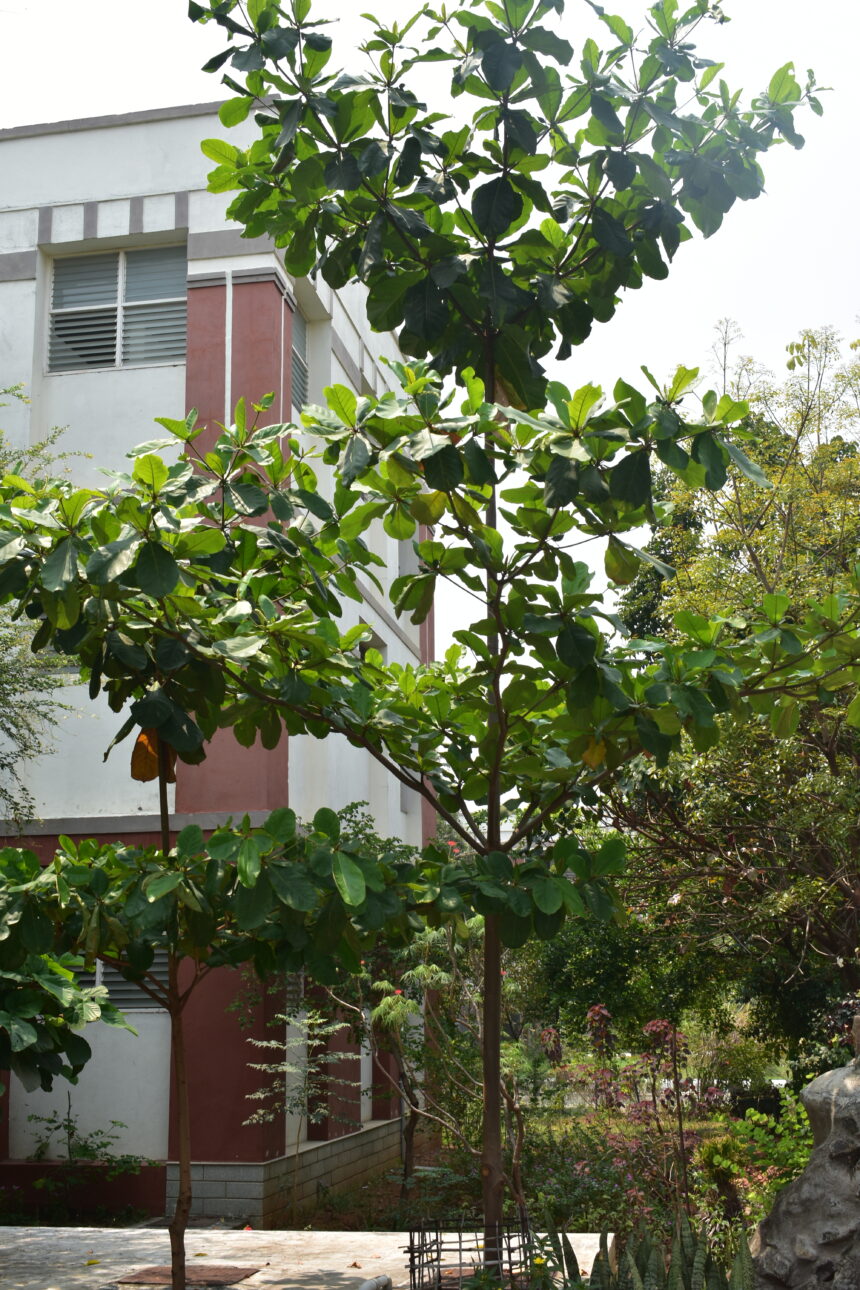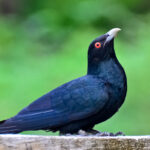Despite this tree being spread quite widely by humans that the native range is uncertain, it has been found to be native to Asia, Australia, the Pacific, Madagascar, and Seychelles. Its common names include Country almond, Indian almond, Malabar almond, Tropical almond, Beach almond, and False kamani. This is a deciduous tropical tree that can grow upto a height of 75 to 90 feet. It has a spreading crown with horizontal branches in tiers. It consists of a dark and scaly trunk, dark green, leathery, oval-shaped leaves arranged spirally in rosette-like clusters at branch tips, greenish-white flowers, and dry, egg-shaped, oval, one-seeded fruits with almond-like tasting edible seed kernels.
Terminalia catappa is a large tropical tree in the leadwood tree family, Combretaceae, native to Asia, Australia, the Pacific, Madagascar and Seychelles. Common names in English include country almond, Indian almond, Malabar almond, sea almond, tropical almond, beach almond and false kamani.
It’s uses
Trees of this genus unfortunately discourage biodiversity in the area but have remarkably small carbon footprints. It is useful for the treatment of scabies, leprosy wounds, and other skin diseases. The indian almond is an ornamental tree, but its wood is used in making canoes. The tree contains agents that help in the prevention of cancer. Herbal tea made from its leaves is prescribed against dysentery and diarrhea.
Animal Life dependent on this tree
Through studies, it has been found that the endangered scarlet macaws depend on this tree for fodder. Its fruits are attractive to bats and its important pollinators are stingless bees.







